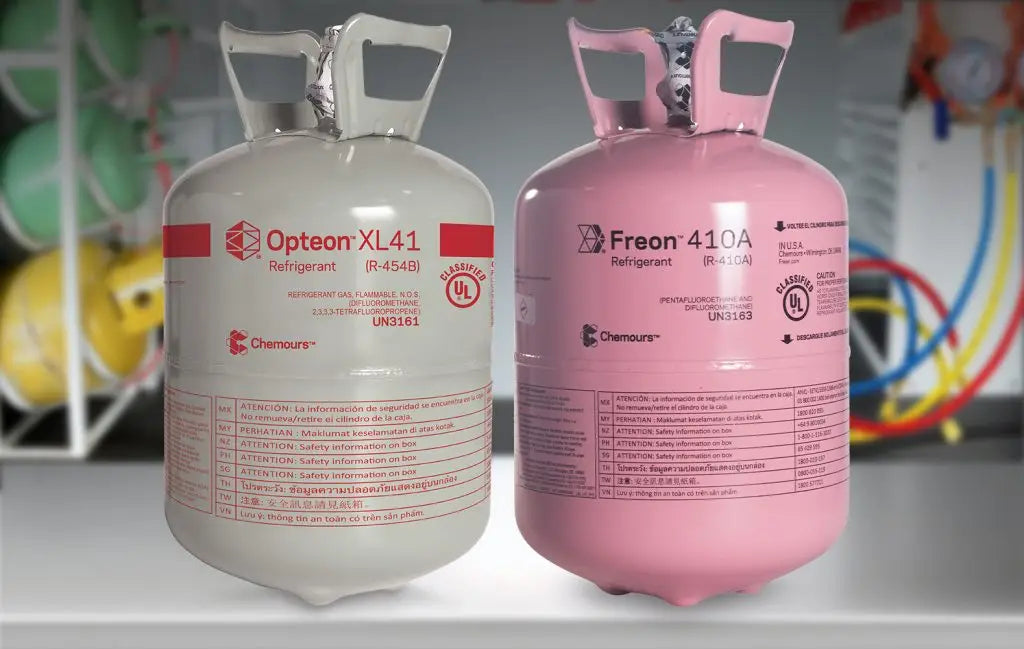With the HVAC industry’s low-GWP refrigerant transition well underway, the debate over efficiency has sharpened. At the center of this conversation are two key A2L refrigerants: R-32 and R-454B. While both offer compliance with environmental regulations, their real-world performance diverges in ways that impact homeowners, contractors, and energy policy alike. This article compares R-32 vs. R-454B efficiency through lab data, manufacturer specs, and global use cases to help guide smart refrigerant choices.
Understanding Efficiency Metrics
When we talk about energy efficiency in air conditioning systems, we typically refer to:
-
SEER (Seasonal Energy Efficiency Ratio): Cooling output over a typical cooling season divided by energy consumed
-
COP (Coefficient of Performance): Ratio of useful heating or cooling to the energy input
-
EER (Energy Efficiency Ratio): Cooling capacity divided by power input under specific conditions
These values are affected not only by system design but also by the chemical properties of the refrigerant.
How R-32 Performs
R-32 is a single-component refrigerant with a GWP of 675. Despite its slightly higher GWP compared to blends like R-454B (466), R-32 delivers standout efficiency in practical use:
-
Higher cooling capacity at equivalent compressor displacement
-
Lower energy consumption over time due to superior thermodynamic properties
-
Better heat transfer performance, allowing for more compact coil design
According to Daikin’s research, R-32 systems can achieve up to 10% higher energy efficiency than their R-410A counterparts—and in many cases, beat R-454B as well.
How R-454B Compares
R-454B is a blended refrigerant designed to replace R-410A, with a lower GWP of 466. While it offers a moderate efficiency gain over R-410A, its performance still falls short of R-32 in side-by-side lab tests.
The AHRI refrigerant transition whitepaper suggests that R-454B:
-
Delivers marginally improved EER vs R-410A
-
Has slower evaporative rates and less favorable pressure drop characteristics
-
Exhibits slightly lower heat transfer efficiency than R-32, affecting seasonal efficiency outcomes
Real-World Applications: What the Data Shows
In a comparative test published by MAG HVAC, R-32 systems delivered:
-
5–10% higher SEER ratings than R-454B models
-
Improved compressor efficiency under high-load conditions
-
Better performance retention over multi-year usage cycles
Meanwhile, field installations in Europe and Asia, where R-32 is the dominant low-GWP refrigerant, show longer service intervals and reduced electricity bills for consumers.
Additional Considerations
-
System Size: R-32 enables more compact system design due to its higher volumetric capacity, reducing materials and installation costs.
-
Climate Sensitivity: R-32 retains efficiency better in high-ambient environments compared to R-454B, making it a stronger choice in hot climates.
-
Energy Code Compliance: Higher SEER values give R-32 systems an edge in meeting or exceeding state and federal energy mandates.
Bottom Line: R-32 Wins on Efficiency
While both R-32 and R-454B present environmentally forward solutions, the efficiency benefits of R-32 make it a better candidate for long-term HVAC adoption. Its superior heat transfer, system simplicity, and energy savings align better with both homeowner expectations and regulatory goals.
Looking for more information on why R-32 may be the best A2L refrigerant for your home or business? Check out our comparison of R-32 vs. R-454B refrigerants and our pillar page on refrigerant strategy.







